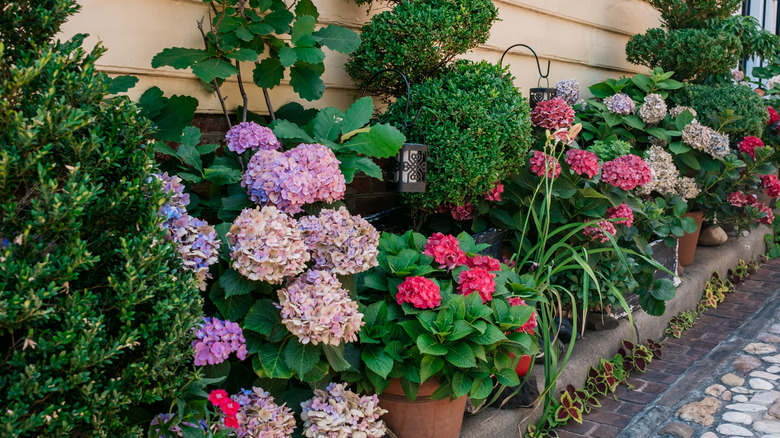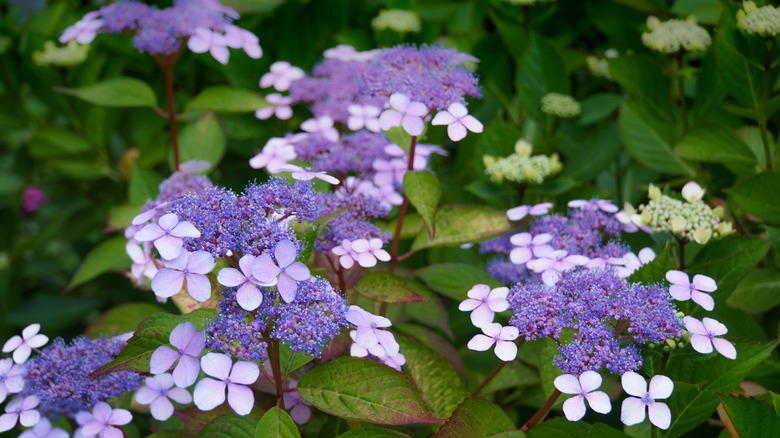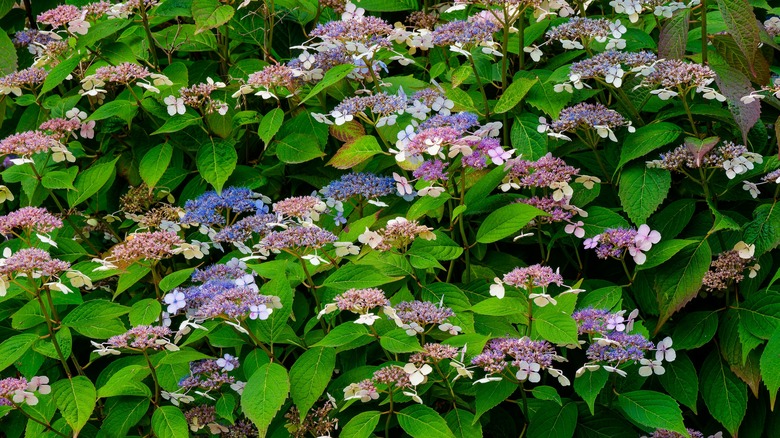The Underrated Hydrangea Variety That Thrives In Small Yards And Clay Soil
When most people think of hydrangeas, their minds go straight to the bigleaf varieties (Hydrangea macrophylla), those border-overspilling bushes that are full of foliage and flush with puffy pink, blue, and white blooms. Yet, there is one stunning hydrangea variety that is lesser-known, can thrive in clay soil, and is perfect for smaller spaces: the mountain hydrangea (Hydrangea serrata).
Unlike its showier siblings, mountain hydrangeas are a compact shrub that rarely grows taller than 4 feet. Their smaller scale makes them ideal for gardens where space is limited and needs to be maximized. Whether you're working with a narrow border, planting along a path, or filling a corner of a patio, mountain hydrangeas offer bursts of pink or blue hues without crowding out other plants. Their compact size also means they are a hydrangea variety that's perfect for container planting, so you can enjoy their delicate lacecap blooms even on balconies or small patios.
These hydrangeas also bloom longer than expected, often lasting until the first frost, which is a major win when every plant in a small space needs to earn its keep. In fall, their foliage transitions into vibrant shades of red, keeping your garden colorful even after the blooms have faded.
Why mountain hydrangea thrive in clay soil
One of the mountain hydrangea's most valuable traits is its adaptability, especially when it comes to tougher soil types. These shrubs hail from the mountainous regions of Korea and Japan, meaning they are used to rocky environments. While bigleaf hydrangeas are tolerant of clay, mountain hydrangeas are the perfect choice for picky clay soil; in fact, this is where they thrive. These hydrangeas particularly love clay soil that is mixed with compost to create better drainage and give them the aeration they need to stay healthy.
Mountain hydrangeas are not just tolerant of tougher soils, they're also impressively hardy in general. These shrubs suit USDA Hardiness Zones 5 through 9, and those living in colder climates are much more likely to see their mountain hydrangea flowers come back year after year compared to other varieties. If you've tried and failed to grow other hydrangea types in clay soils, this variety could be the reliable alternative you've been looking for.
How to plant and care for mountain hydrangeas
When planting your mountain hydrangea, it's best to choose a spot that gets morning sun and afternoon shade or, better yet, filtered light throughout the day. This is because too much sunlight can scorch the plant's leaves, so it's all about finding that happy medium. While they do handle clay soil well, these hydrangeas still benefit from a spot that has good drainage.
Once planted, water the mountain hydrangea thoroughly once a week, especially during its first year, to keep the soil moist while it settles. To help retain soil moisture in between waterings, apply some mulch around the base and give it an extra hydration boost during any long, hot spells. At the end of the summer season, after it has flowered, remove any dead wood to help encourage new blooms the following year. Whether you want a beautiful yet hard-working plant for your small space, or you're looking for a hydrangea that works with clay soil, mountain hydrangeas could be just the type you've been looking for.


